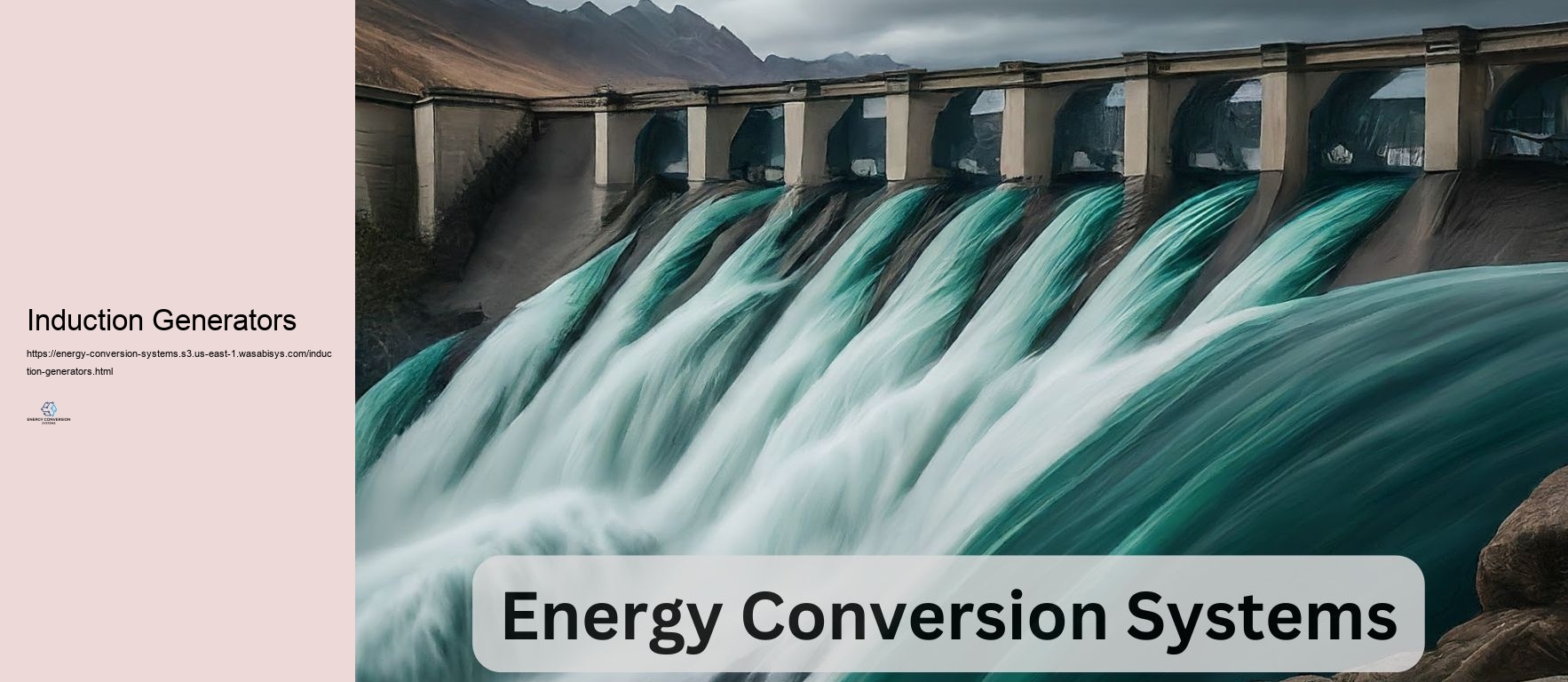

Energy conversion systems play a crucial obligation in contemporary society, making it feasible for the renovation of many kinds of energy right into better and reasonable kinds. These systems are fundamental to power generation, transport, industrial treatments, and daily modern technologies. Recognizing the concepts and applications of energy conversion systems is critical for developers, policymakers, and any person interested concerning the area of energy. At its core, energy conversion is controlled by the regulations of thermodynamics. The first policy of thermodynamics, which states that energy can not be created or spoiled nonetheless only transformed from one kind to one more, is the framework of all energy conversion systems. The 2nd regulation introduces the concept of decline and effectiveness, describing why no energy conversion process can be 100% effective. These essential concepts underpin the style and procedure of all energy conversion systems. Among among the most typical and substantial energy conversion systems is the thermal nuclear power plant. These centers transform the chemical energy kept in nonrenewable fuel sources (such as coal, oil, or gas) or nuclear gas right into electric energy. The treatment typically requires melting the gas to heat water, creating heavy steam that drives a generator connected to a generator. This system, based upon the Rankine cycle, is an archetype of transforming thermal energy to power and later on to electrical energy. Modern thermal nuclear power plant use numerous strategies to boost efficiency, such as supercritical vapor conditions and blended cycle systems. Renewable resource systems stand for another essential category of energy conversion. Solar photovoltaic or pv (PV) panels transform light energy directly right into electrical energy using the photoelectric impact.
Energy conversion developments are at the leading edge of altering how we harness and utilize energy, playing an important role in the change in the direction of sustainable and trusted energy systems. From photovoltaics to gas cells, these technologies include a diverse array of gadgets that transform natural energy resources into usable kinds, such as power, heat, and gas. Each technology operates distinctive principles and is matched to particular applications, providing unique benefits and obstacles. Comprehending these technologies is important for progressing energy solutions that manage worldwide energy needs while reducing eco-friendly impact. Photovoltaics (PV) stand for among the most frequently recognized forms of solar energy conversion. These systems make use of semiconductor products, normally silicon, to transform sunshine right right into electrical energy by means of the solar influence. When sunshine strikes the surface area of a PV cell, it excites electrons, producing an electric existing. Photovoltaic or pv modern-day innovation has progressed considerably throughout the years, with improvements in materials and design leading to increased performance and lowered prices. Arising contemporary technologies, such as thin-film solar cells and natural photovoltaics, are pressing the restrictions of efficiency and versatility, making solar energy a great deal even more obtainable and adaptable to various applications, from building rooftops to large solar ranches. Concentrated solar energy (CSP) is one more solar energy conversion innovation that varies from photovoltaics by utilizing mirrors or lenses to focus sunlight onto a small location, typically a receiver. The concentrated light is traded heat, which is afterwards utilized to produce vapor that drives a wind generator connected to an electric generator. CSP systems are especially reputable in areas with high directly sunlight and can incorporate thermal energy storage area solutions to supply power also when the sunlight is not beaming. This capacity to keep energy as warmth permits CSP plants to give an extra stable and respectable power result contrasted to common solar PV systems. Gas cells are a versatile energy conversion development that produces power via an electrochemical response, commonly consisting of hydrogen and oxygen. Unlike combustion-based power generation, fuel cells generate electrical energy without shedding gas, causing reduced tires and higher effectiveness. There are a number of sort of gas cells, each set apart by the electrolyte utilized and the operating temperature level variety. Polymer electrolyte membrane (PEM) gas cells, as an example, are known for their high power density and are generally utilized in transport applications, such as fuel cell trucks. Solid oxide fuel cells (SOFCs), on the different other hand, operate at greater temperature degrees and are suitable for repaired power generation and commercial applications. Hydroelectric power is a trustworthy energy conversion modern innovation that benefits from the kinetic energy of streaming water to produce power. By leading water with generators, hydroelectric plants change the energy of relocating water right into mechanical energy, which is after that changed right into electrical energy by generators. This technology is highly effective and can provide a regular and credible power supply, making it a keystone of renewable energy portfolios in lots of countries. However, the environmental impact of large hydroelectric tasks, such as habitat disturbance and changes to water communities, demands mindful intending and monitoring. Wind energy conversion innovations document the kinetic energy of wind using wind turbines, which change it into mechanical energy and subsequently right into electric power. Wind wind turbines are commonly established in places with solid and regular wind patterns, such as coastal areas and open levels. Improvements in generator design, such as bigger blades sizes and taller towers, have in fact drastically enhanced the performance and ability of wind power generation. Offshore wind ranches are similarly obtaining hold, using the opportunity for significant energy generation with marginal land use effect. Geothermal energy conversion use the World interior warm to create power and give direct home heating applications. Geothermal power plants make use of vapor or hot water from underground containers to drive wind generators and generate electrical energy. This innovation is very efficient and can provide a continuous power supply, as geothermal sources are excluded to the variability seen in solar and wind energy. Furthermore, geothermal systems can be made use of for right home heating applications, such as area heating and greenhouse farming, added enhancing their comfort. Compressed Air Energy Storage Biomass energy conversion involves making use of natural items, such as plant and pet waste, to generate warmth, power, or biofuels. Biomass can be exchanged energy through various procedures, including shedding, gasification, and anaerobic food digestion. This technology supplies the benefit of using waste products and can add to waste monitoring remedies. Nonetheless, the sustainability of biomass energy relies on the resource of the biomass and the strategies made use of for farming and harvesting. Tidal and wave energy conversion contemporary technologies harness the energy of sea fads and waves to create electric power. Tidal nuclear reactor normally make use of batteries or undersea generators to document the energy of moving water, while wave energy converters remove energy from the surface area activity of waves. These innovations are still in the developing stages nonetheless hold guarantee for supplying a reputable and foreseeable source of renewable energy, specifically for seaside regions. The landscape of energy conversion contemporary technologies varies and swiftly proceeding, driven by the requirement for lasting and efficient energy solutions. From photovoltaics and focused solar energy to gas cells and hydroelectric systems, each modern innovation materials distinct benefits and barriers. By advancing these innovations and integrating them into the global energy system, we can transfer towards a much more lasting and sturdy energy future, reducing our dependancy on nonrenewable fuel sources and reducing eco-friendly effect. As {research and development continue to be to press the boundaries of what is feasible, the capacity for cutting-edge energy conversion solutions to modification our energy landscape remains substantial and motivating.
Energy conversion systems are essential to modern-day society, playing a vital task in transforming raw energy sources right into practical power that fuels homes, markets, and transport. These systems include a large range of innovations and treatments created to change energy from one type to an additional, such as changing chemical energy in fuels to power in engines or electric energy in nuclear reactor. A comprehensive evaluation of the crucial components in energy conversion systems reveals the complexity and class related to effectively benefiting from and using energy sources. Understanding these aspects is vital for boosting effectiveness, enhancing efficiency, and decreasing environmental effect. The starting point of any kind of energy conversion system is the energy resource, which can be sustainable or non-renewable. Renewable resource resources consist of solar, wind, hydroelectric, geothermal, and biomass, while non-renewable resources include nonrenewable gas sources like coal, oil, and gas, in addition to atomic energy. The option of energy source substantially influences the layout and operation of the conversion system, as each source has special features, such as routine, energy thickness, and ecological influence. As an example, solar power systems trust solar panels or solar thermal enthusiasts to capture sunshine, while fossil fuel-based systems use burning treatments to launch energy saved in chemical bonds. Plasma Energy Conversion At the heart of any kind of energy conversion system is the energy conversion gizmo, which modifications the main energy resource right into a different kind of energy. Common conversion devices consist of generators, engines, generators, and gas cells. Wind turbines, taken advantage of in both fossil fuel and renewable energy systems, transform kinetic energy from vapor, water, or wind into power, which is after that changed into electric energy by generators. Inside combustion engines, common in transport, transform chemical energy from fuels right into power with taken care of rises. Gas cells, on the numerous other hand, right change chemical energy from hydrogen or numerous other gas into electric power with electrochemical responses, supplying high efficiency and low wears down. Warmth exchangers are vital components in several energy conversion systems, particularly those requiring thermal processes. These devices advertise the transfer of warm in between two or much more fluids without blending them, boosting the efficiency of energy conversion. In nuclear power plant, heat exchangers are used to step warmth from burning gases to water, creating heavy vapor that drives wind generators. In a/c systems, they transfer warmth in between indoor and outside settings, controling temperature and boosting energy effectiveness. The design and item selection for heat exchangers are important for enhancing cozy transfer prices and lessening energy losses. Control systems are vital for the safe and reliable operation of energy conversion systems. They screen and manage countless specifications, such as temperature level, stress, blood circulation price, and voltage, making sure that the system runs within defined limitations and reacts properly to modifications popular or running problems. Advanced control systems use sensing units, actuators, and solutions to optimize performance, increase reliability, and reduced energy usage. In contemporary nuclear power plant, electronic control systems make it possible for real-time tracking and automation, allowing chauffeurs to make data-driven choices and execute anticipating maintenance approaches. Energy storage room elements are substantially vital in energy conversion systems, particularly those relying on regular renewable resources like solar and wind. Storage space systems, such as batteries, flywheels, and pumped hydro storage space, shop excess energy produced during periods of low requirement and launch it when need is high, assuring a secure and trusted power supply. The mix of energy storage area boosts the adaptability and strength of energy systems, enabling much much better tons keeping track of and decreasing dependence on fossil fuel-based back-up power. The growth of sophisticated storage innovations, such as lithium-ion and solid-state batteries, remains to drive improvements in energy thickness, performance, and cost-effectiveness. When energy is converted into a beneficial kind, it needs to be transmitted and dispersed to end-users. Transmission and circulation systems consist of a network of transformers, power lines, substations, and blood circulation lines that deliver electrical power from nuclear power plant to homes, services, and sectors. Reliable transmission and distribution are important for reducing energy losses and ensuring a reputable power supply. Technologies such as high-voltage direct current (HVDC) transmission and clever grid modern-day innovations are enhancing the performance, ability, and stability of electricity networks, assisting in the assimilation of renewable energy sources and enhancing grid monitoring. Environmental management systems are indispensable to energy conversion systems, especially those including shedding treatments. These systems are created to decrease the environmental influence of energy conversion by minimizing tires of toxic substances such as sulfur dioxide, nitrogen oxides, bit issue, and co2. Technologies such as scrubbers, discerning catalytic decrease (SCR), and carbon capture and storage space (CCS) are utilized to capture and deal with exhausts before they are introduced right into the atmosphere. The implementation of environmental protection systems is essential for conformity with ecological guidelines and for minimizing the impact of energy conversion on air excellent quality and atmosphere modification. Improving the effectiveness of energy conversion systems is an important focus for reducing energy usage and environmental impact. Efficiency improvements can be achieved via various ways, such as making the most of the format and operation of conversion tools, executing cutting-edge products and finishings, and integrating waste warmth recovery systems. Consolidated cycle nuclear reactor, which use both gas and heavy steam turbines, exhibition efficiency enhancements by catching and using waste cozy from gas generators to produce included power. Ongoing {research and development efforts stay to explore new materials, innovations, and procedures that can additionally boost the performance and sustainability of energy conversion systems. The important elements of energy conversion systems are indispensable to transforming raw energy sources right into useful power efficiently and sustainably. By recognizing and optimizing these parts, we can improve the efficiency, stability, and eco-friendly compatibility of energy systems, satisfying the growing need for clean and reliable energy services. As technological improvements stay to advance, the prospective for growth in energy conversion systems continues to be substantial, giving possibilities to address the obstacles of energy defense, environment adjustment, and lasting development.
Discover the latest advancements in energy conversion systems, from solar and wind to fuel cells and biomass! Learn how these innovations are driving sustainable energy solutions for a cleaner, more efficient future.https://t.co/9SfMjPHIu9
— Turbine Training And Operation (@turbinetraine) August 25, 2024
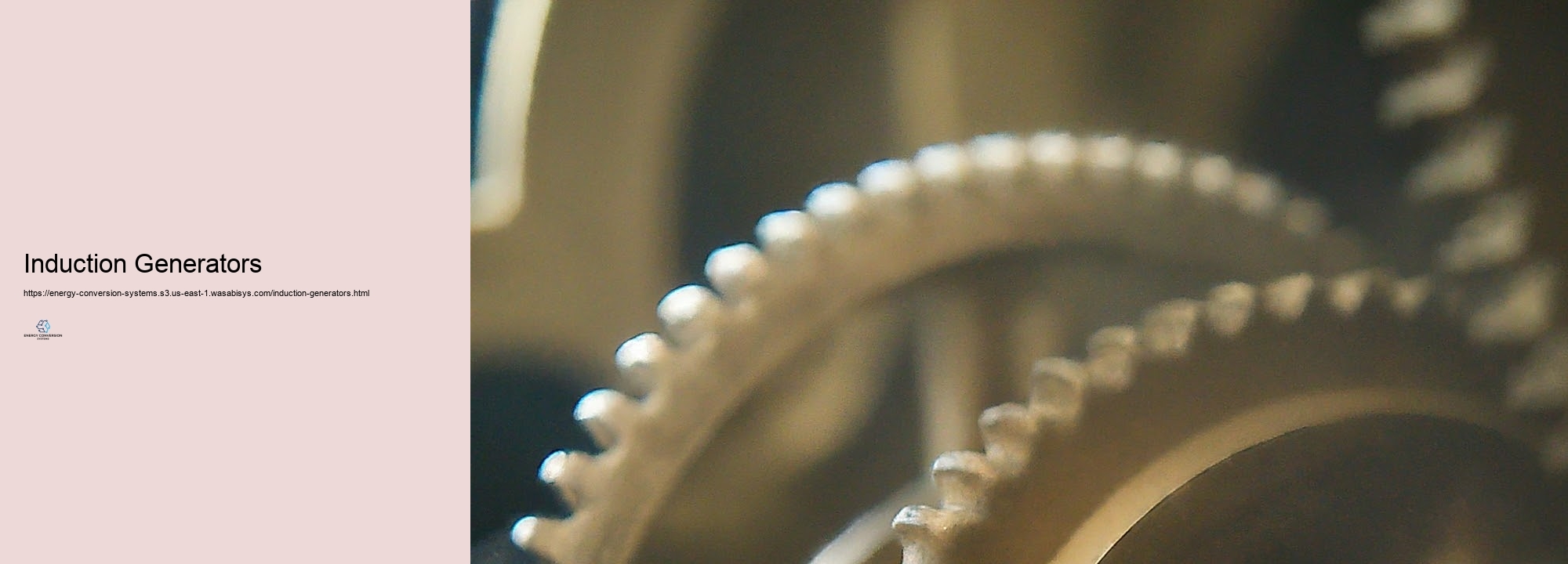
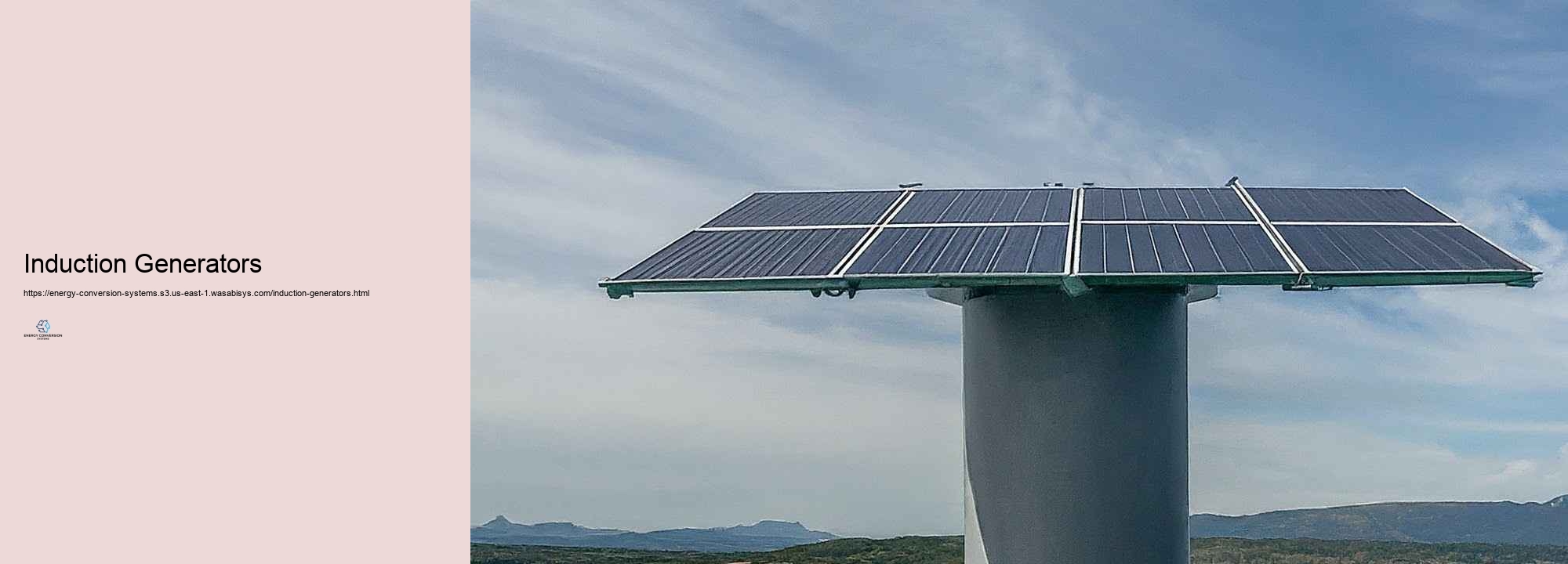
Improving performance in energy conversion is an essential objective in the pursuit of sustainable and cost-efficient energy manufacturing. As global energy need continues to surge, enhancing the effectiveness of energy conversion procedures has ended up being dramatically crucial for minimizing source usage, reducing ecological affects, and ensuring energy safety and security and safety and security. This undertaking consists of a vast array of techniques and innovations throughout various energy fields, from traditional fossil fuel-based systems to renewable energy advancements. One of the primary locations of emphasis for enhancing energy conversion effectiveness remains in thermal power plants, which continue to be a considerable resource of electric energy worldwide. Advanced melting advancements, such as supercritical and ultra-supercritical vapor cycles, have been established to rise the efficiency of coal-fired nuclear reactor. These systems run at higher temperature levels and stress than standard plants, making it possible for greater thermal efficiency and decreased gas intake. Likewise, mixed cycle gas wind turbine (CCGT) plants, which usage both gas and vapor turbines, can accomplish effectiveness of as much as 60%, significantly higher than standard single-cycle plants. Waste heat healing systems stand for an extra important technique for improving energy conversion efficiency. In a number of industrial procedures and power generation systems, a substantial quantity of warm is shed to the environment. By performing advancements such as all-natural Rankine cycles (ORC) or thermoelectric generators, this waste cozy can be captured and exchanged helpful electrical energy. This not only boosts complete system efficiency nevertheless likewise reduces the demand for included energy input, triggering cost financial savings and decreased ecological impact. In the globe of renewable energy, continuous innovations are driving restorations in energy conversion performance. For solar solar or pv (PV) systems, innovations in cell design and products have caused stable increases in conversion efficiency. Multi-junction cells, which use several layers of semiconductor materials to catch different sections of the solar range, have in fact attained efficiencies going beyond 40% in lab setups. Arising innovations such as perovskite solar batteries expose guarantee for further performance improvements and expense reductions in solar power conversion. Wind energy conversion has in fact likewise seen considerable performance remodellings through technological improvements. Bigger wind generator measurements, progressed blade styles, and improved control systems have enhanced the capability element of wind ranches. Additionally, the improvement of overseas wind modern-day innovation has opened brand-new opportunities for benefiting from stronger and extra normal wind sources, far better boosting energy conversion performance. In the area of energy storage room, which is crucial for managing the intermittency of renewable energy resources, various methods are being looked for to boost performance. Advanced battery modern-day innovations, such as solid-state batteries and blood circulation batteries, supply the prospective for greater energy thickness, much faster billing rates, and much longer life-spans contrasted to regular lithium-ion batteries. These improvements can cause a lot more dependable energy storage area and circulation systems, lowering losses in the energy conversion chain. Hydrogen production and gas cell technologies mean another place of growth in energy conversion performance.
The assimilation of renewable resource sources right into conversion systems is a transformative strategy reshaping the global energy landscape. As the globe looks for sustainable solutions to fulfill increasing energy needs while lowering ecological effects, the function of renewable energy in conversion systems ends up being seriously crucial. This combination entails integrating eco-friendly resources such as solar, wind, hydro, and biomass with regular energy systems to establish hybrid systems that optimize energy producing, boost effectiveness, and decrease carbon exhausts. By leveraging the staminas of both lasting and standard energy resources, these systems deal a path to a much more resistant and lasting energy future. Crossbreed energy systems most likely to the leading edge of incorporating renewable resource sources right into conversion systems. These systems incorporate a number of energy resources to give a secure and relied on power supply. As an example, solar panels can be coupled with wind wind turbines to enhance each other, as solar power is plentiful throughout the day while wind energy can be taken advantage of during the night or throughout over cast days. By integrating these resources, crossbreed systems can reduced reliance on fossil fuels, decreased greenhouse gas exhausts, and offer a much more continuous energy supply. Additionally, hybrid systems frequently consist of energy storage area solutions, such as batteries or thermal storage area, to keep excess energy generated throughout peak making times for use throughout periods of reduced renewable resource access. This capacity boosts the integrity and flexibility of the energy supply, making it a lot even more resistant to variations in renewable resource generation. The successful assimilation of renewable energy resources into conversion systems in addition depends greatly on advancements in grid adaptation and creative modern innovations. Modern power grids are developing to suit the variable nature of renewable resource resources. Smart grids, complete with innovative sensing units, communication technologies, and automation, make it feasible for real-time surveillance and administration of energy circulations. This enables the dependable mix of renewable resource right into the grid, balancing supply and demand dynamically. Smart modern technologies also help with demand action techniques, where customers change their energy use based upon availability and rate signals, additionally maximizing making use of renewable energy. By enhancing grid versatility and strength, these contemporary innovations support the smooth assimilation of renewables, making sure a constant and trusted energy supply. Energy storage area options play an essential function in the combination of renewable energy sources right into conversion systems. Piezoelectric Devices The periodic nature of renewable energy, such as solar and wind, needs the requirement for efficient storage space solutions to ensure a consistent energy supply. Advanced battery technologies, such as lithium-ion and blood circulation batteries, provide trustworthy storage space options that can save excess energy created throughout optimal manufacturing times and launch it when required. Furthermore, thermal energy storage space systems, such as molten salt storage space, are made use of along with focused solar power (CSP) plants to save warmth for power generation throughout non-sunny durations. These storage area services not just improve the integrity and safety of renewable resource systems however additionally enable greater penetration of renewables right into the energy mix, lessening dependence on nonrenewable fuel sources and lowering carbon discharges. The mix of renewable resource resources is additionally driving the adjustment towards decentralized energy systems. Unlike regular central power generation, decentralized systems generate energy closer to the point of consumption, decreasing transmission losses and increasing energy performance. Roof covering photovoltaic panels, small wind generators, and community-based renewable energy tasks are instances of decentralized systems that equip customers to produce their very own energy. This decentralization enhances energy security, reduces grid congestion, and makes it possible for higher customer engagement in the energy market. By integrating renewable energy sources right into decentralized systems, locations can complete better energy independence and toughness, adding to a far more lasting and reasonable energy future. The adaptation of renewable resource resources right into conversion systems is sustained by preferable plan and governing structures. Federal governments around the world are carrying out policies that motivate the fostering of renewable energy, such as feed-in tariffs, tax obligation inspirations, and environmentally friendly profile demands. These plans develop a helpful setting for financial investment in renewable resource jobs and advertise {research and development in sophisticated innovations. In addition, governing frameworks are advancing to accommodate the distinctive top qualities of renewable energy, such as grid interconnection standards and net metering plans. By offering a secure and supportive plan environment, federal governments can increase the combination of renewable resource resources into conversion systems, driving the transition to a lasting energy future. The assimilation of renewable resource resources right into conversion systems supplies considerable eco-friendly and monetary advantages. By decreasing reliance on nonrenewable gas resources, these systems reduced greenhouse gas discharges, contributing to atmosphere modification reduction and boosted air high quality. The use of renewable energy furthermore minimizes water intake and lessens the ecological effect of energy making. Economically, the assimilation of renewables develops opportunities for job growth and economic advancement in the tidy energy sector. The decreasing expenditures of renewable resource contemporary innovations, mixed with improvements in energy storage space and grid assimilation, make renewable resource significantly affordable with common energy resources. Consequently, the assimilation of renewables right into conversion systems not just maintains eco-friendly sustainability but similarly enhances energy affordability and financial toughness. Despite the countless benefits, the adaptation of renewable resource resources right into conversion systems faces several barriers. These consist of the irregularity and intermittency of renewable resource, the demand for considerable centers investments, and the intricacy of handling diverse energy sources. However, recurring {research and development efforts are attending to these difficulties, blazing a trail for a lot more reliable and credible assimilation. The future potential customers for renewable energy integration are motivating, with continued innovations in technology, policy assistance, and market features driving the modification to a lasting energy future. As renewable resource becomes an important component of conversion systems, it will definitely play a vital responsibility in meeting global energy requirements while securing the ambience and promoting economic growth. The integration of renewable energy resources right into conversion systems is a transformative process that supplies a pathway to a a lot more lasting, credible, and resistant energy future. By leveraging hybrid systems, smart innovations, energy storage area services, and motivating policy frameworks, the adaptation of renewables can enhance energy production, decrease exhausts, and boost energy safety and protection. As the globe remains to prioritize sustainability and setting action , the assimilation of renewable energy right into conversion systems will certainly be a crucial chauffeur of the globally energy shift, shaping a cleaner and a lot more sustainable future for generations to find.
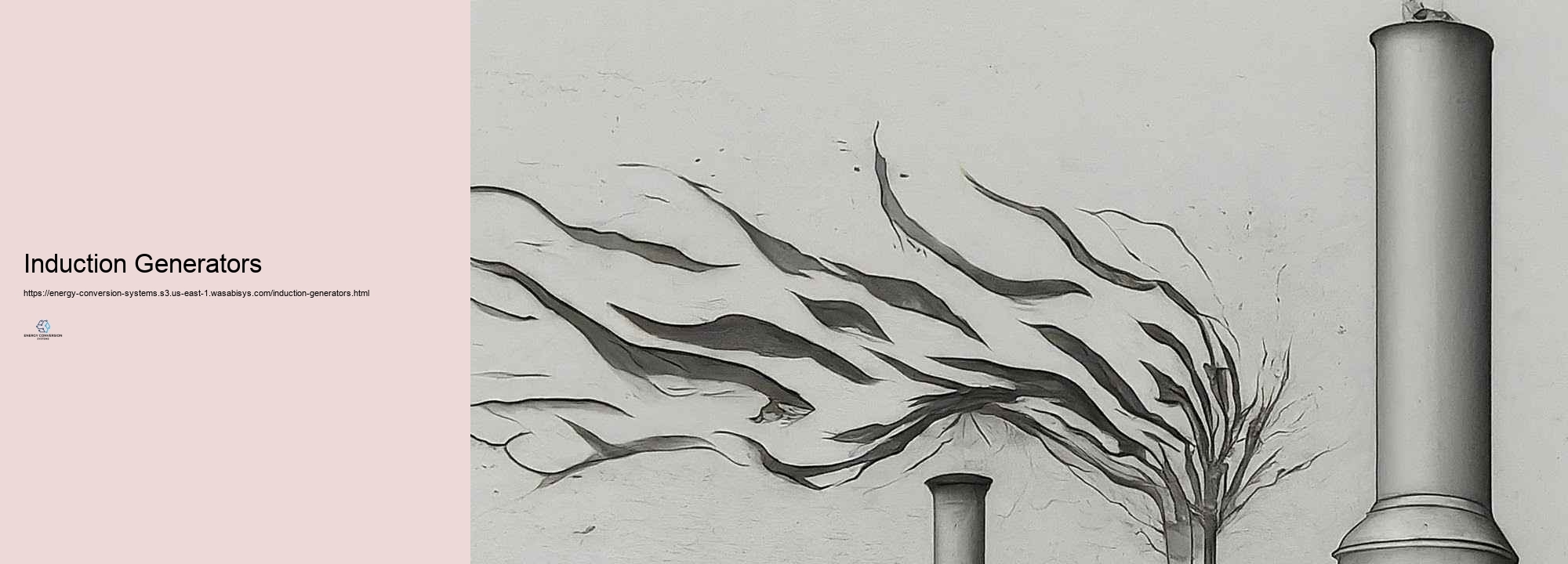
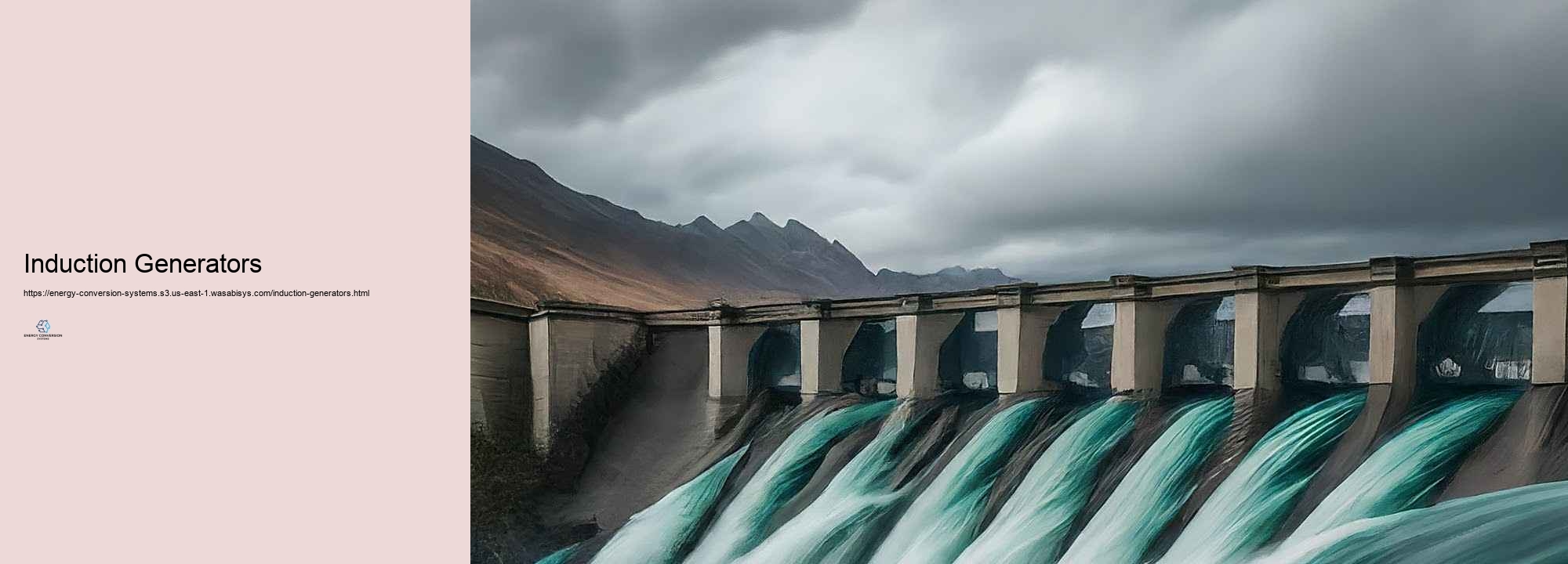
Energy conversion system layout is a challenging area that faces different challenges in the mission for extra reliable, sustainable, and affordable solutions. As globally energy demands continue to increase and environmental troubles boost, engineers and scientists are tasked with developing innovative techniques to overcome these challenges. This intro checks out the important obstacles in energy conversion system style and the arising options that are shaping the future of energy modern-day innovation. One of the vital problems in energy conversion system design is increasing effectiveness. All energy conversion procedures include some degree of energy loss, as determined by the laws of thermodynamics. For thermal systems, such as nuclear power plant, this inefficacy is usually turned up as waste cozy. Attending to this trouble calls for a complex method. Advanced items that can stand up versus greater temperature degrees and stress are being developed, enabling extra efficient thermodynamic cycles. For instance, supercritical and ultra-supercritical heavy steam cycles in coal-fired nuclear reactor can acquire higher performances by running at extremely heats and stress. In internal shedding engines, improvements in melting chamber design, gas shot systems, and exhaust gas recirculation are pressing the restrictions of efficiency. An additional considerable obstacle is the intermittency and irregularity of renewable resource resources. Solar and wind power, while clean and progressively cost-competitive, are not constantly easily offered. This variability settings challenges for grid security and dependability. Solutions to this difficulty include the growth of innovative energy storage area systems, such as grid-scale batteries, pumped hydro storage, and emerging modern-day technologies like circulation batteries. Moreover, the style of crossbreed systems that incorporate numerous energy sources (e.g., solar-thermal crossbreed plants) can aid decrease the intermittency issue. Smart grid innovations and need activity systems are additionally being established to far better take care of the equilibrium between variable supply and need. Ecological result is a crucial factor to consider in energy conversion system style. Decreasing wears down, specifically from fossil fuel-based systems, is a significant barrier. Solutions include the development of carbon capture and storage area (CCS) modern technologies, which mean to record CO2 wears down before they enter into the atmosphere. Advanced burning innovations, such as oxy-fuel melting and chemical looping melting, are being checked out to help with added reliable carbon capture. For renewable resource systems, challenges include decreasing the environmental effect of making treatments and taking care of concerns like wild pets protection in wind ranch design. Scalability and cost-effectiveness present constant barriers in energy conversion system design. Lots of motivating technologies that work well in laboratory setups experience troubles when scaled as much as commercial degrees. For instance, gas cells have disclosed fantastic prospective for effective energy conversion, yet challenges in scaling up production and lowering expenditures have in fact restricted their extensive fostering. Solutions entail study right into brand-new products and producing treatments to decrease costs and boost strength. Additionally, modular design methods are being discovered to assist in a lot easier scaling and customization of energy systems. The assimilation of various energy conversion systems settings an extra significant difficulty. As the energy landscape comes to be additional varied, with a mix of conventional and sustainable resources, developing systems that can work together efficiently becomes vital. Solutions consist of the growth of innovative control systems and power electronic devices that can care for the complexities of including different energy resources. On-line nuclear reactor ideas, which buildup and coordinate dispersed energy sources, are emerging as a remedy to this mix challenge. Material limitations existing recurring challenges in energy conversion system style. Great deals of sophisticated energy innovations call for unusual or pricey materials, which can limit their scalability and economic functionality. As an instance, some high-efficiency solar cells rely upon unusual planet components. Solutions to this difficulty include research study into alternate items, such as earth-abundant parts for solar panels, and the growth of recycling technologies to recoup and reuse critical materials from shut off systems. Thermal keeping an eye on is an important challenge in a number of energy conversion systems. Efficient cooling is vital for keeping effectiveness and long life, particularly in high-temperature applications like gas generators or focused solar energy systems. Solutions consist of advanced cooling down innovations, such as closed-loop vapor air conditioning for gas generator blades, and the innovation of brand-new products with much better heat-resistant residential or commercial residential or commercial properties. In electronic systems, technologies in heat sink layout and using phase-change items for thermal checking are being uncovered. Energy storage space remains a considerable difficulty, specifically for applications calling for high energy thickness or quick charge/discharge cycles. While lithium-ion batteries have seen considerable improvements, they still face limitations in energy thickness and cycle life. Solutions being checked out include the growth of solid-state batteries, which guarantee greater energy thickness and enhanced safety and security, and research right into special chemistries like lithium-sulfur or lithium-air batteries. For grid-scale storage area, blood circulation batteries and innovative mechanical storage area systems (like pushed air energy storage space) are being created. The challenge of system stability and upkeep is vital, particularly as energy systems become far more challenging and spread. Ensuring durable reliability while reducing maintenance needs is important for the economic security of energy conversion systems. Solutions contain the advancement of ingenious keeping an eye on and analysis systems, normally leveraging expert system and artificial intelligence formulas to expect and safeguard versus failings. The concept of self-healing systems, which can quickly place and attend to little issues, is furthermore being looked into. Adaptability in energy conversion systems is becoming gradually important as energy grids progress. Systems require to be able to respond quickly to modifications sought after and supply, especially with the boosting infiltration of variable renewable energy resources. Solutions consist of the development of more adaptable thermal nuclear power plant that can increase and down promptly, making use of energy storage systems to offer grid solutions, and the implementation of demand reaction contemporary technologies that can change energy consumption based upon grid problems. The location of energy conversion system style take care of countless difficulties in the quest of a lot more efficient, lasting, and dependable energy solutions. Nevertheless, these problems are driving technology throughout a wide variety of advancements and strategies. From sophisticated materials and special system creates to the adaptation of electronic modern technologies and creative control systems, the services being created are not just addressing existing challenges but likewise leading the way for the next generation of energy conversion systems. As {research and development continue, these remedies warranty to reshape the worldwide energy landscape, relocating us towards an extra lasting and dependable energy future.
The effect of energy conversion systems on environmental sustainability is extensive and complex, impacting whatever from greenhouse gas discharges and resource shortage to environment health and wellness and biodiversity. As the international demand for energy continues to be to increase, driven by population growth and monetary improvement, the requirement for lasting energy services becomes increasingly immediate. Energy conversion systems, which adjustment raw energy resources right into usable kinds such as power, warmth, and fuel, play a crucial function in this shift. By examining the environmental impacts of various energy conversion technologies, we can better recognize their payments to sustainability and identify courses for renovation. Standard energy conversion systems, especially those depending on nonrenewable fuel resources such as coal, oil, and natural gas, have actually typically been significant contributors to environmental deterioration. The burning of these fuels launches significant amounts of co2 (CARBON DIOXIDE) and other greenhouse gases right into the atmosphere, driving atmosphere modification and its associated results, such as enhancing worldwide temperature levels, sea-level rise, and serious weather condition occasions. Additionally, fossil fuel removal and dealing with can produce environment damages, soil and water contamination, and air air pollution, better aggravating environmental problems. On the other hand, renewable energy conversion systems, such as solar, wind, hydroelectric, and geothermal, usage extra lasting choices by making use of natural energy circulations that are abundant and replenishable. These systems commonly create bit to no direct discharges during treatment, significantly lowering their carbon impact contrasted to fossil fuel-based modern-day technologies. As an instance, solar photovoltaics and wind generators create power without burning gas, staying free from the launch of CARBON DIOXIDE and various other toxic substances.
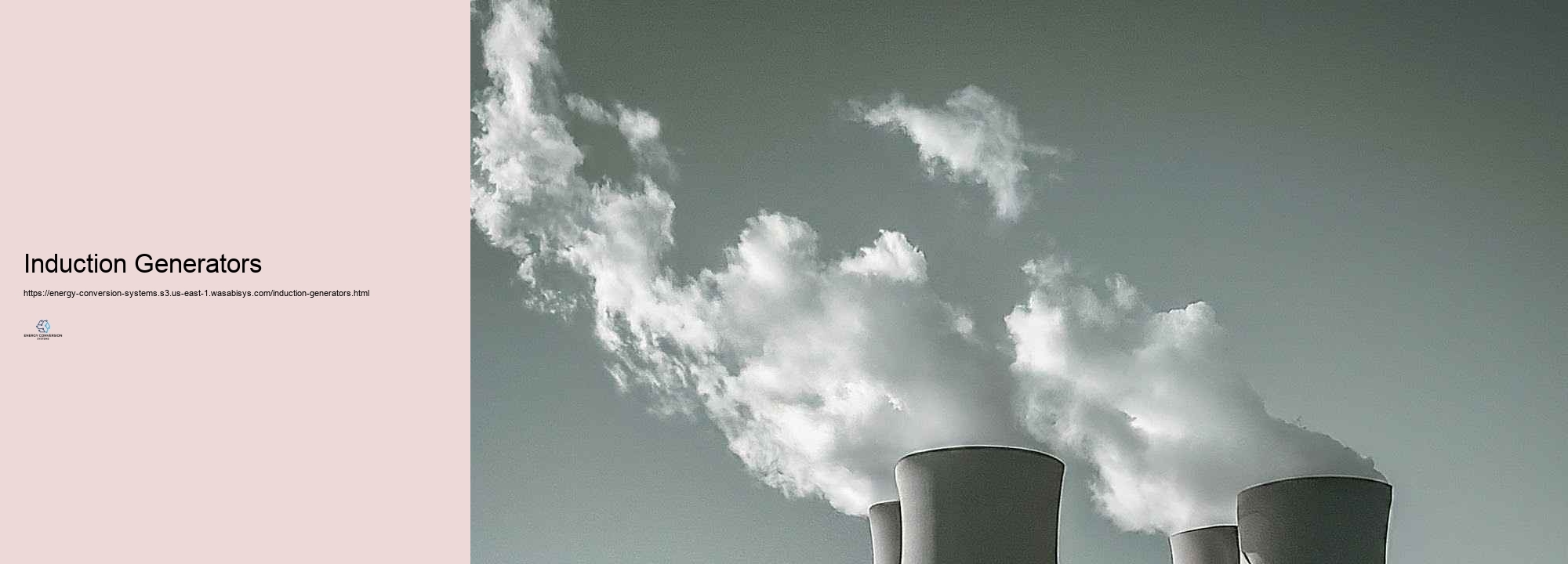
Energy conversion systems are technologies or processes that transform one form of energy into another, such as converting solar energy into electricity or mechanical energy into electrical energy.
Common types of energy conversion systems include solar photovoltaic panels, wind turbines, fuel cells, hydroelectric power systems, and geothermal energy converters.
Energy conversion systems improve efficiency by optimizing the process of converting energy from one form to another, reducing waste, and enhancing the overall output of usable energy.
Energy conversion systems are crucial in renewable energy as they enable the transformation of natural energy sources like sunlight, wind, and water into electricity, supporting sustainable power generation.
Challenges include optimizing efficiency, minimizing energy loss, integrating with existing grids, managing costs, and ensuring reliability and sustainability of the energy sources used.